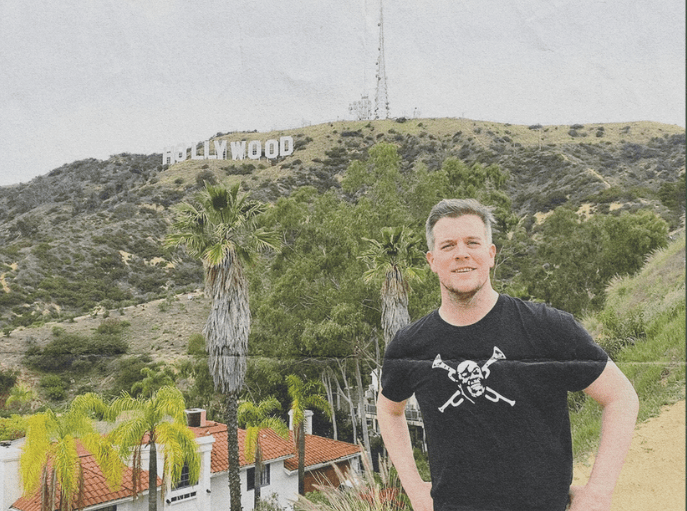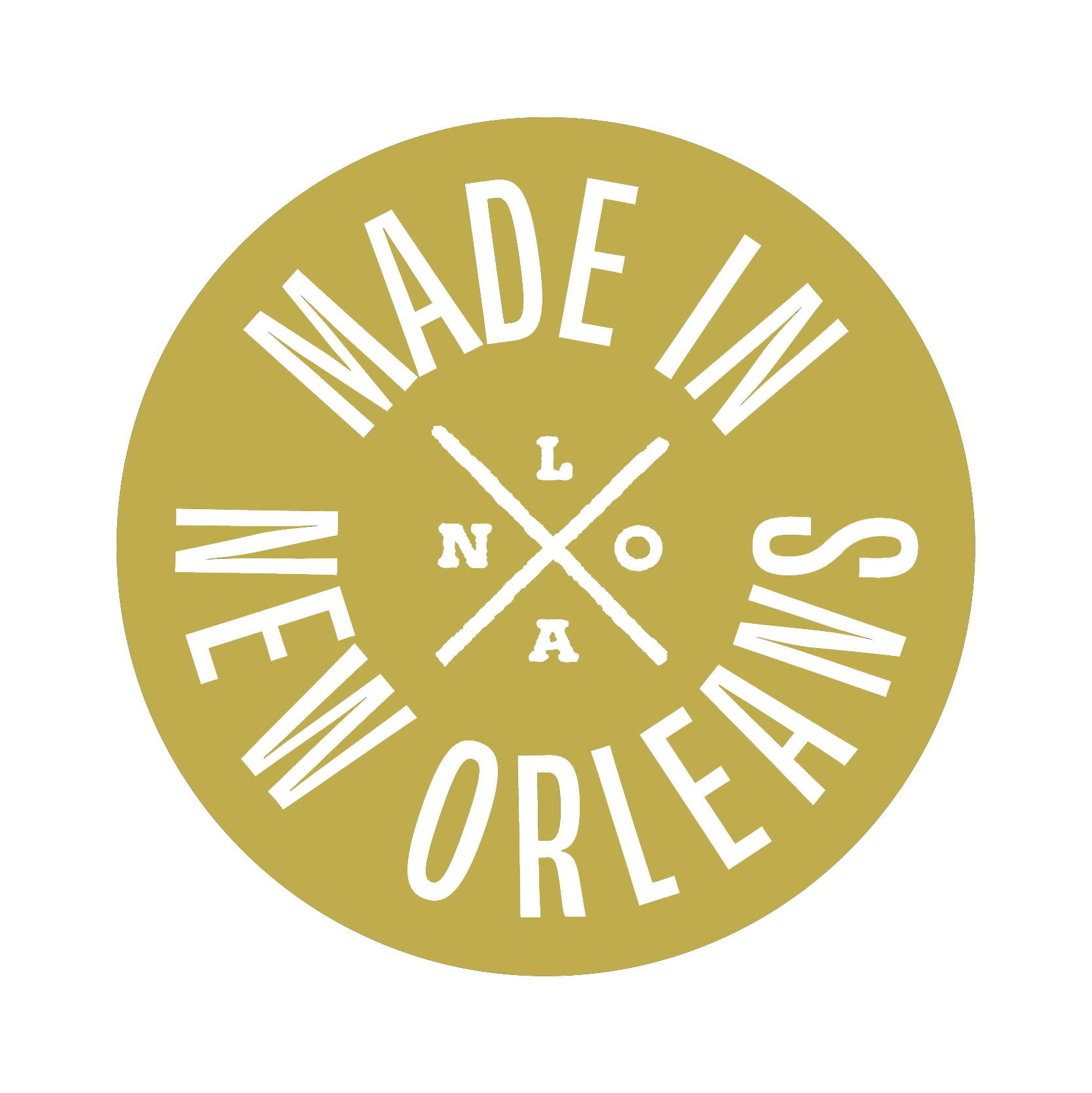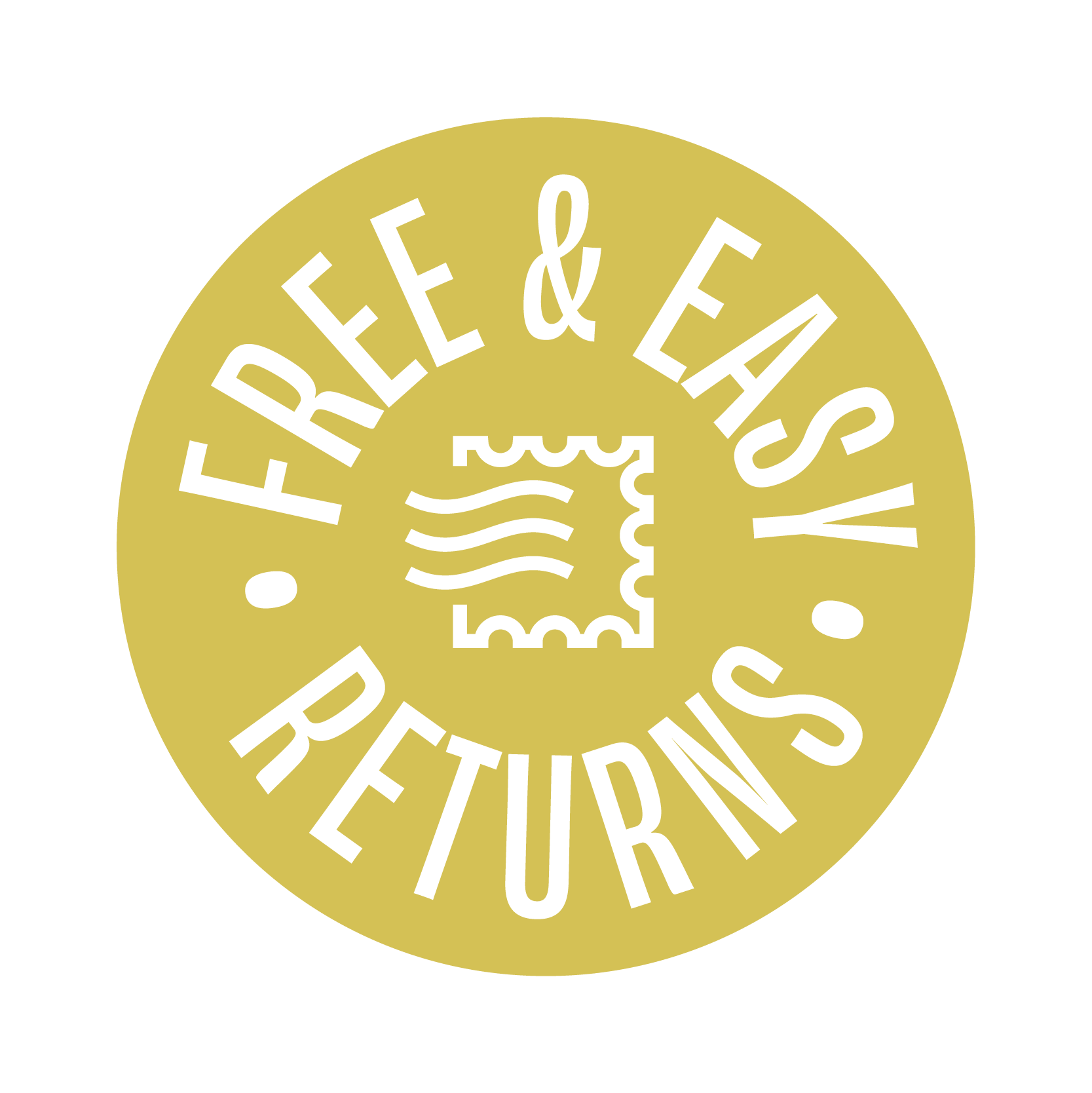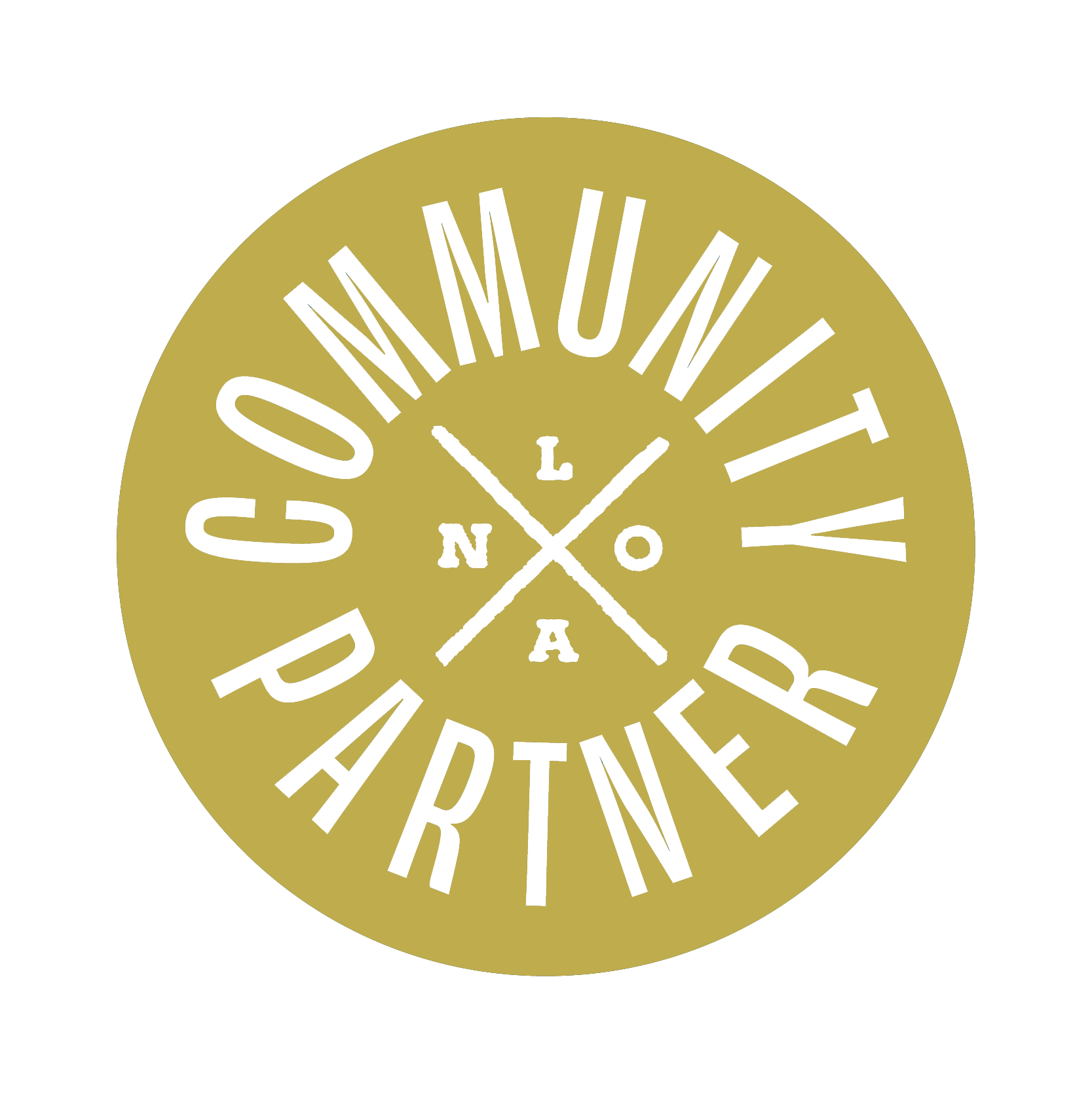Hired in 2013, Chris soon became a frequent creative contributor for new product designs and then in 2015 he stepped up as General Manager. He is now living in Los Angeles with his wife Kylie and their dog Olive. All three are chasing the dream (and sometimes their tails) in Hollywood.
--
Blake
Alright, let’s reminisce. What are your earliest memories of Dirty Coast before you met me for coffee at Mojo in 2013?
Chris
Oh man—where the legacy began. Like everyone else, I remember Be a New Orleanian Wherever You Are. That one was front and center in my mind. I’d seen a few other designs too—Listen to Your City, River/Lake—all of those were big at the time. You guys were really hitting your stride as a brand.
Meanwhile, I had dreams of being an illustrator. I carried around a sketchbook full of ideas but had no clue how to turn them into anything real. My girlfriend at the time said, “Well, I know this guy named Blake—have coffee with him.” The rest is history.
It was definitely a learn-on-the-job situation. I think the first time I came over to your place—back when you were living on Tchoupitoulas—you gave me a ten-minute crash course in Illustrator and Photoshop: “Here’s what these buttons do.” After that, it was all self-taught. I’d work in the store during the day, and in between customers I’d be on YouTube looking up tutorials, pulling inspiration off the shelves, and trying to imagine what else could be added to them.
Blake
That seems to be a thing I’ve done in the past with people who were trying to learn certain programs or get into programming or whatever. My approach was always sort of, “Yeah, cool—figure it out, and I’ll get you some work.”
Chris
You put the “dirty” in Dirty Coast. It was fast and dirty.
Blake
You came on to work the store. Patrick was still there.
Chris
Yeah, Mandy was still there. Georgia too. And I think Ashlyn was there as well. I can’t really recall who trained me my first day in the store. I do know the training lasted about 10 minutes, then they said, “Okay, you got this.” Suddenly I was just there, thinking, well, it’s one task, how hard can it be? You’re selling t-shirts. Luckily my folding techniques have improved over the years, so at least I kept it tidy.
Blake
Once Patrick had left, I was finally working in the office for the first time in 10 years—being there every day. I wasn’t clear on everything we needed to do to grow the company from where we were. I basically turned to you and said, “Wanna be manager and help me figure this out?”
Chris
Yeah. Looking back now and seeing the scope of how you guys have grown, I can definitely see my role in history as that transitional era. I wasn’t there at the very beginning to form the molten core of the company, but I helped it break out of that chrysalis and start to transform into the size and breadth it is now. I think at that time we had the Magazine Street store and Julia Street.
Blake
You were interesting because you were employee, manager, and designer. What were some of your favorite concepts you worked on when you were at Dirty Coast?
Chris
I think my legacy will always be New Orleans Is for Livers, the Moonwalk shirt, Happy Almost Mardi Gras, Y’all, and Small Town After All. Those are kind of the big ones that have become evergreens.
Blake
Livers. That’s really an iconic design. The concept stuck around to become an evergreen design—“cubby-worthy,” as we say.
Chris
Yeah. And then there were also a lot of others that weren’t as big. I’m looking at my website right now at some of the ones I did for you guys. Where the Pothole Begins—that’s pretty good. This Is My Laissez Tank—that one didn’t stick around too long. Fat City was cool; I liked that one. Union Justice Basketball, which eventually morphed into Union Justice and Crawfish.
And then there was the sort of Matchbook series I worked on during the pandemic.
Blake
Yeah, that one was great. I was actually talking to Burton about the challenge over all these years—how difficult it is to keep finding concepts or directions for concepts about New Orleans or Louisiana. Ones that we haven’t already done, that someone else hasn’t already done, and that can actually be developed into a series.
For me, it was the Nolatones. For Burton, it’s been the tarot/prayer candle series. And for you, the Matchbook series was a solid example of that. Those are always wins—whenever you can land on a concept that expands into a series of designs.
Did you work on any of the Screens For Good fundraising designs?

Chris
That was getting off the ground when I was transitioning out. I did eventually design a few. One for a local business, Manolito, and another for Prescription Joy for Becca Chapman.
Blake
You played a very pivotal role, obviously, with the challenging transition after Patrick left. I stepped into the driver's seat of day-to-day life, having also adopted Julian. Then, I went through him being diagnosed with cancer while trying to keep my design studio afloat. It was a stressful period. Thank you for being there for that.
Chris
My pleasure. I'm like the emergency blanket you throw over a fire. That coffee we had that day was life-changing for me — it really launched my graphic design career, which is still going strong.
Dirty Coast has always felt homegrown, like a family, and you showed that. When I needed a place to live, you said the other side of your shotgun was free and to come on in. You were a lot of support.
Blake
You were one of 4 who, over the years, needed a place for a bit and stayed with us on Thalia.
Chris
The Haney House for Wayward Boys.

Blake
What are some of the things you’re doing now with your graphic design? Have you expanded that personally? Are you still doing a lot of work in L.A., or have you branched out beyond that? Do you focus most of your energy now on building that out?
Chris
I do, and I actually have plans to increase that. Since the pandemic, the entire landscape of my life and work has changed. Before then, I was waiting tables and just wanting to be an actor. Then suddenly, I couldn’t do either of those things anymore. So I fell back on my passion for being an artist.
I was lucky enough to have made a contact just before the pandemic—he’s the executive and artistic director of a theater out here that hosts nationally touring shows, orchestras, all that kind of stuff. He’d seen my website, which had some Dirty Coast designs and freelance work, and he called me up: “We need another hand on board—do you want to help?” I took the job, and now I’m going on my fourth year with them as their in-house (but work-from-home) graphic designer. So I’ve got a nice steady “day job” doing design.
On top of that, I freelance. I’ve got theater companies—mostly in New Orleans and around L.A.—that I’ve known for years. When their seasons come up, they’ll reach out for poster work. A lot of small businesses contact me for logos, t-shirts, and other projects. I’m very much a gun-for-hire when it comes to design.
At the same time, I’ve been stockpiling some of my own ideas. Not to build a Dirty Coast replica, but something in that vein—just cool stuff people might want to buy one day. That’s my next big swing. I just need to get some cool yellow glasses before I do it.
I’m incredibly proud. I joked about it earlier, but I really do feel like I built a legacy with Dirty Coast, and I’m proud that’s where I got my start as an artist.
Blake
Ever see yourself moving back down here?
Chris
Yes. I think ever since I made the move out west—and honestly, even before that—I’ve always felt like my story will end in New Orleans somehow. The city just draws you back.
I’m lucky that my wife’s family is also from New Orleans. We actually met there, moved out to L.A. separately, became friends, fell in love, and now we both get to go “home” to the same place, which is really special. So we’ll always have our roots in New Orleans.
That said, there’s still a lot of the country and the world we haven’t seen yet, so we’ll probably hop around a bit more before eventually settling back.
Blake
Is there anything else that comes to mind when you look back on your years at the company?
Chris
I’m incredibly proud. I joked about it earlier, but I really do feel like I built a legacy with Dirty Coast, and I’m proud that’s where I got my start as an artist.
Every time we fly back home and I see the shop at MSY, and there’s something I drew hanging on the wall—I can’t beat that feeling. It’s even cooler when I spot it in the wild. A couple times I’ve seen someone in L.A. wearing one of my designs, and I’ll give them a little tap on the shoulder: “Nice shirt, man.”
It’s a unique company. Dirty Coast represents the best, funniest, and sometimes even the worst of New Orleans—but in a way that locals love and tourists can appreciate. I don’t know if you can ask for more than that.
And looking ahead, with the 20-year mark after the storm, if you had told me back then that we’d all come back together as strong as we have—rebuilding, but also returning to the ridiculous day-to-day stuff that makes this city what it is—I wouldn’t have believed it. But Dirty Coast has cemented its place in New Orleans history because of exactly that.







Leave a comment
All comments are moderated before being published.
This site is protected by hCaptcha and the hCaptcha Privacy Policy and Terms of Service apply.